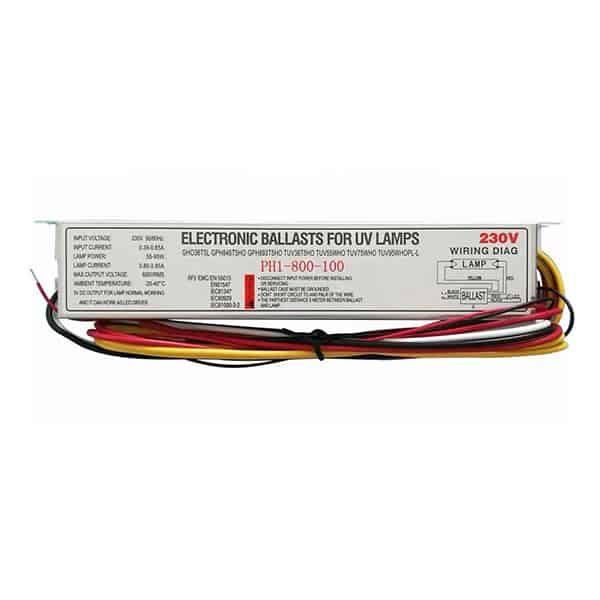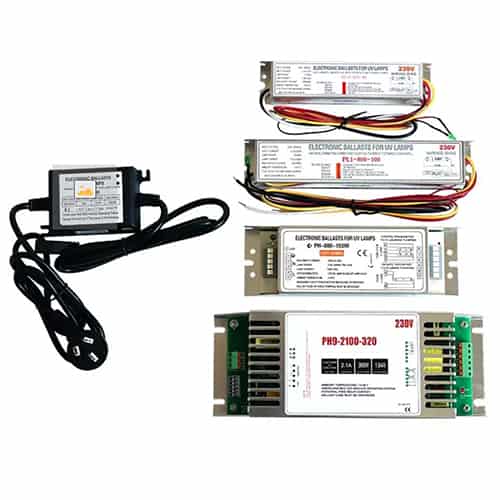People have a hard time deciding between T8 and T12 ballasts. This can lead to inefficient lighting and problems with your system. The solution is to understand the differences between the two types of ballasts.
The main differences between T8 and T12 ballasts are in their energy efficiency, the size of the lamps they support, and compatibility. T8 ballasts are more efficient and use smaller bulbs than the older, bigger T12 ballasts.
Let’s look at the differences between T8 and T12 ballasts.
What Are T8 and T12 Ballasts?
T8 ballasts are designed to operate T8 fluorescent tubes, which are 1-inch in diameter. They are widely used in both commercial and residential lighting due to their energy efficiency and sleek design. T8 ballasts work with lower wattage, often making them an eco-friendly and cost-effective option. Many businesses and homeowners are upgrading to T8 ballasts to benefit from long-term savings on their energy bills. Additionally, T8 ballasts provide better light quality, making them ideal for workspaces and areas that require accurate color rendering.
On the other hand, T12 ballasts are part of an older lighting system, designed to support larger fluorescent tubes. The lamps used with T12 ballasts are 1.5 inches in diameter. Although T12 ballasts were once the industry standard, they are far less efficient than modern alternatives. Their higher energy consumption and outdated technology have caused T12 ballasts to become less popular, with many facilities phasing them out in favor of T8 ballasts.
Energy Efficiency Differences
One of the most significant differences between T8 and T12 ballasts is their energy efficiency. T8 ballasts are known for their ability to use less energy while still providing excellent lighting output. A typical T8 ballast uses around 32 watts of power per lamp, which leads to significant savings on energy bills over time. This makes them an attractive option for businesses looking to reduce operational costs without sacrificing light quality. T8 ballasts also support various energy-saving features such as dimming and motion sensors, further enhancing their efficiency.
In contrast, T12 ballasts are far less energy-efficient, using around 40 watts or more per lamp. This higher energy consumption not only results in increased electricity costs but also contributes to a larger carbon footprint. The inefficiency of T12 ballasts is one of the main reasons they are being phased out in favor of more modern lighting systems like T8. While T12 systems may seem cheaper initially, their long-term operating costs can be significantly higher due to their inefficient energy use.
Compatibility with Lamps
When it comes to compatibility, T8 ballasts are designed to work with newer, slimmer T8 fluorescent lamps. These lamps not only consume less energy, but they also offer better color rendering and have longer lifespans compared to T12 lamps. This makes T8 ballasts ideal for environments where both efficiency and quality lighting are priorities. Many T8 systems also come with modern features such as dimming capabilities and occupancy sensors, making them suitable for a variety of applications.
T12 ballasts, on the other hand, are only compatible with older, bulkier T12 lamps. These lamps are 1.5 inches in diameter and are increasingly hard to find due to their declining production. T12 lamps also produce less efficient light output and require more power to operate. For those still using T12 systems, finding replacement parts and lamps can be challenging, and retrofitting existing systems to T8 ballasts is often a recommended solution to improve energy efficiency and reduce maintenance costs.
Environmental Impact and Regulations
In today’s energy-conscious world, the environmental impact of lighting systems plays a crucial role in decision-making. T8 ballasts are aligned with modern environmental standards, making them a more eco-friendly choice. They comply with energy regulations set by agencies like the Environmental Protection Agency (EPA) and are often recommended for businesses seeking to reduce their carbon footprint. By upgrading from T12 to T8 ballasts, facilities can significantly reduce their energy consumption, helping to meet stricter energy efficiency guidelines and contributing to global sustainability efforts.
In contrast, T12 ballasts have a much higher environmental impact due to their energy inefficiency. The increased power consumption of T12 systems not only raises electricity bills but also contributes to greater greenhouse gas emissions. Many regions have begun phasing out T12 lighting systems altogether, and some areas even restrict the sale of T12 lamps. This shift is largely driven by the push for more sustainable lighting solutions, and retrofitting T12 systems with T8 ballasts is often recommended to help meet current environmental regulations.
Cost and Maintenance Considerations
Cost is always an important factor when choosing between T8 and T12 ballasts, and while T8 ballasts may have a higher upfront cost, their long-term benefits outweigh the initial investment. T8 lamps have longer lifespans, which reduces the need for frequent replacements. This, combined with the lower energy consumption of T8 ballasts, leads to significant cost savings over time. Additionally, T8 ballasts typically require less maintenance, which can further reduce overall operating costs for businesses.
T12 ballasts and lamps, while initially cheaper, tend to be more expensive in the long run due to higher energy usage and more frequent replacements. The reduced availability of T12 lamps also means that finding replacement parts can be costly and time-consuming. As T12 systems continue to be phased out, maintaining these older ballasts will become increasingly difficult and expensive, making the transition to T8 ballasts a more cost-effective solution in the long term.
Final Words:
The choice between T8 and T12 ballasts comes down to energy efficiency, compatibility, and cost. T8 ballasts will give you a modern solution that’s better for the environment and saves you money.



